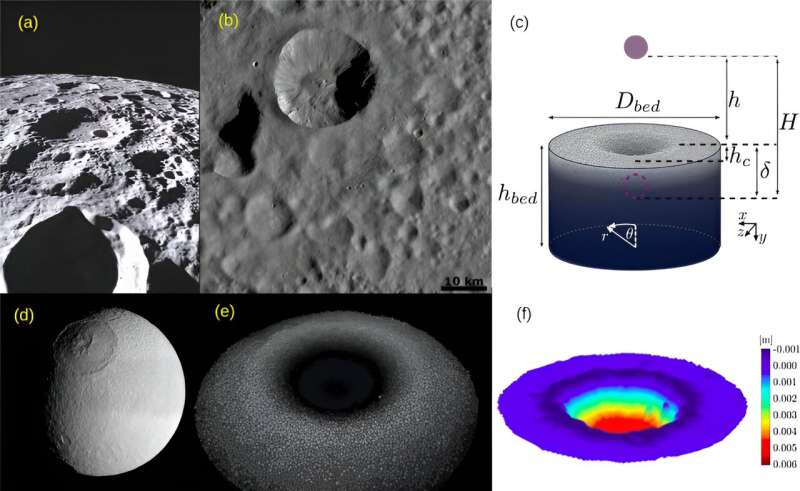December 14, 2023 report
This article has been reviewed according to Science X's editorial process and policies. Editors have highlighted the following attributes while ensuring the content's credibility:
fact-checked
peer-reviewed publication
trusted source
proofread
Simulations of craters reveal characteristics of impactors such as spin speed, bond strength

A team of engineers at the University of Campinas, in Brazil has found that the unique characteristics of craters, both on Earth and on other bodies in space, are due to the unique features of both the impactor and the site where it strikes. In their study, reported in the journal Physical Review E, the group built and ran simulations of impactors striking planets, moons and other bodies.
Prior research has shown that impact craters have widely varying characteristics—some are deep, for example, while others are shallow. Also, some have relatively small debris fields while others cover large areas around a crater—and some have clearly defined, elevated rims, while others have no rim at all.
Theories abound regarding the reason for such differences, but as the team on this new effort found, little has been done to test them. So the team built and ran a simulation that took a host of factors into consideration that could apply when smaller space bodies crash into bodies that are much larger.
To create their simulations, the research team assembled virtual projectiles roughly the size of grapefruit—each was made up of thousands of tiny spheres to vary the degree of density. They also modeled targets using a similar approach. They then applied physics to simulate impacts—denser impactors moving very fast, for example, would hit harder than less dense, slow-moving targets.
They added other characteristics of impacts, such as how fast an impactor was moving, how fast it was spinning and its axis of spin. They also allowed for adjusting the angle of impact as desired. They ran their simulation under a variety of circumstances to test as many factors as possible.
They noted some trends. Projectiles that shattered on impact, for example, that were spinning faster, were more likely to spread their debris farther than those spinning more slowly. They also found that crater shape was at least partly dependent on the bond strength of the material making up the impactor. They noted also that bond strength plays a role in determining whether material from the impactor makes it into the rim of a crater.
The researchers say their model could be used by others studying specific craters to learn more about how their features might have come about.
More information: Douglas D. Carvalho et al, Impact craters formed by spinning granular projectiles, Physical Review E (2023). DOI: 10.1103/PhysRevE.108.054904. On arXiv: DOI: 10.48550/arxiv.2311.15026
Journal information: Physical Review E , arXiv
© 2023 Science X Network





















